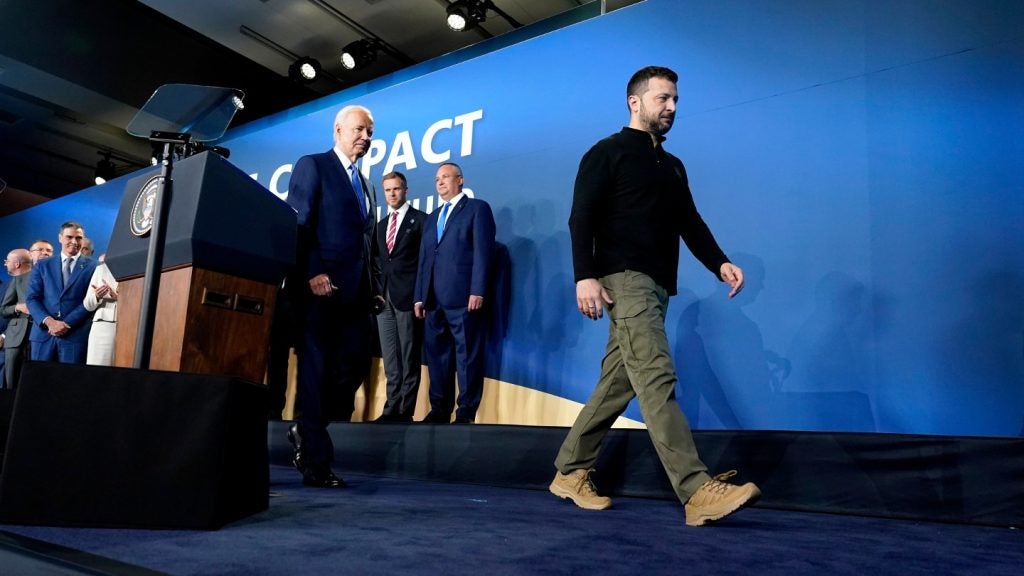Ukraine has successfully tested its first indigenous ballistic missile, President Volodymyr Zelenskyy said earlier today (27 August 2024).
The domestic-made ‘Palianytsia’ is a missile-drone hybrid designed to strike deep into Russian territory – an offensive strategy Ukraine has repeatedly implored its western allies to authorise.
“What developments does Ukraine have? Well, I thought it’s too early to speak about it but … there has been a positive test of the first Ukrainian ballistic missile”, Zelenskyy said at a press conference in Kyiv. “I congratulate our defence industry on this. I can’t share any more details about this missile”.
Yesterday (26 August), Defence Minister Rustem Umerov said Ukraine is preparing a response to two consecutive nights of heavy Russian airstrikes with “weapons of its own production”.
Palianytsia’s development comes as Zelenskyy vowed to avenge these airstrikes, which killed four people and injured 16 others.
Ukrainian forces’ counter-incursion into Russia’s Kursk region has now entered its third week. Vyacheslav Gladkov, governor of the Belgorod region, said Ukrainian special forces had attempted an incursion into Belgorod in a post on Telegram earlier today (27 August).
The details: Ukraine’s ‘Palianytsia’ missile
Days before the successful test, Zelenskyy confirmed the existence of the Palianytsia program.
On 24 August, Ukraine’s leader said military forces had struck the Russian army with a Ukrainian weapon “of a completely new class”, Pravda reported.
Ukraine’s defence industry has reportedly been working on Palianytsia for a year-and-a-half. Its range, which a Ukrainian military video hinted is up to 700 kilometres, encompasses at least 250 militarily significant targets, including at least 20 Russian airfields housing military aircraft.
The US has supplied Ukraine with Army Tactical Missile Systems (ATACMS) with a similar range to the Palianytsia, but current restrictions only allow Ukraine to strike 20 of these targets, according to the Institute for the Study of War.
Palianytsia has prompted analysts to question whether lack of direct involvement would persuade Kyiv’s western allies to authorise long-range strikes on Russian territory.
“[The Palianytsia’s development] shows that if the West will not supply deep-strike weapons, Ukraine will develop their own”, says Wilson Jones, defence analyst at GlobalData. “Although these are usually more expensive to design and build, Ukraine can make that work if the rest of their defence platforms are being supplied from abroad”.
Named after a traditional Ukrainian bread, Palianytsia is difficult for non-native speakers to pronounce and became a linguistic shibboleth when Russia launched its full-scale invasion of Ukraine in February 2022.
“This could lead to some interesting market dynamics down the line, say in five to ten years,” Jones adds. “Will Ukraine have an outsized long-range missile industry, which it can then export abroad?”
Ukraine’s Ministry of Defence did not respond to an Army Technology request for comment at the time of publication.









